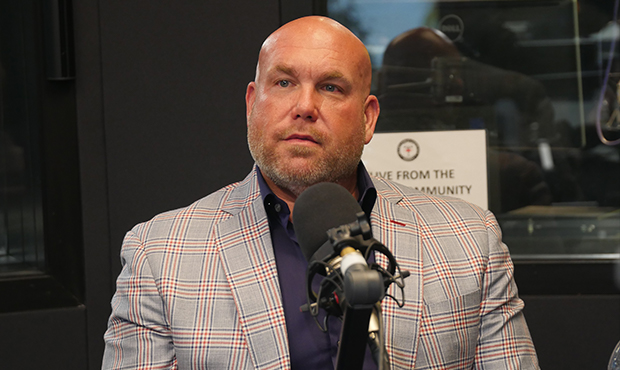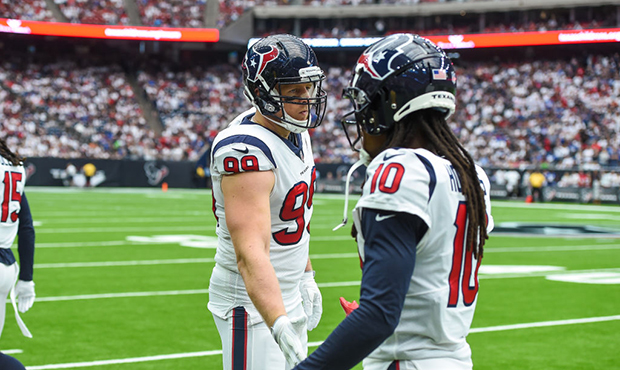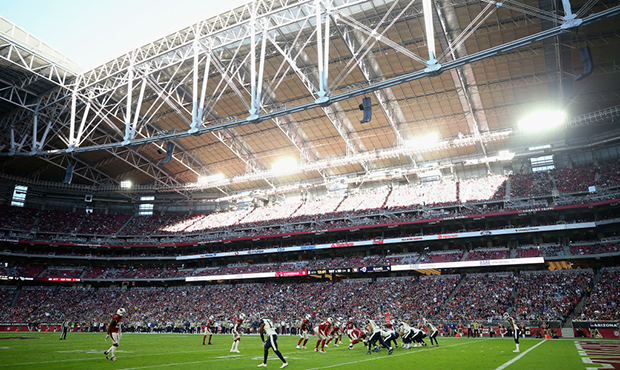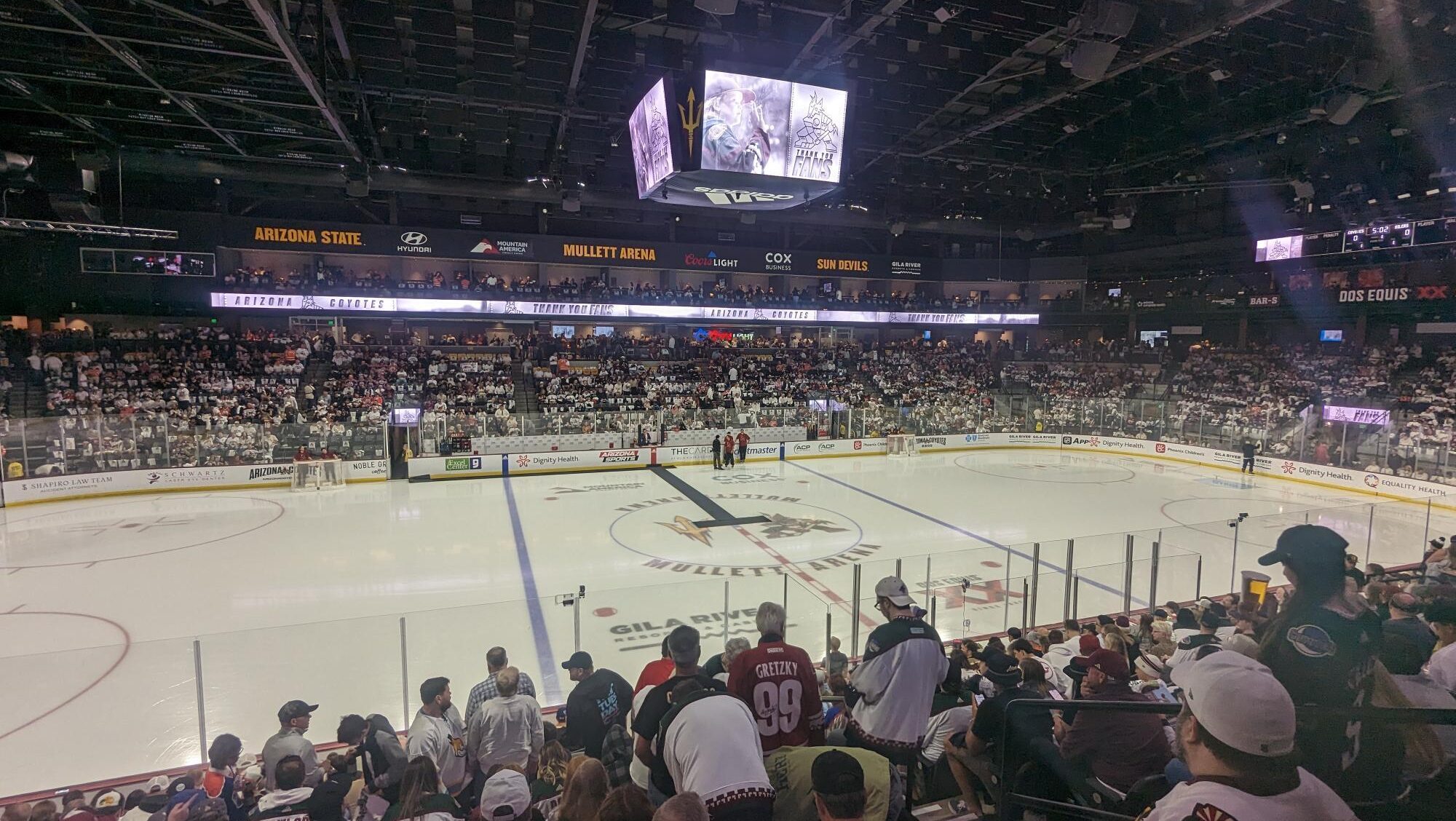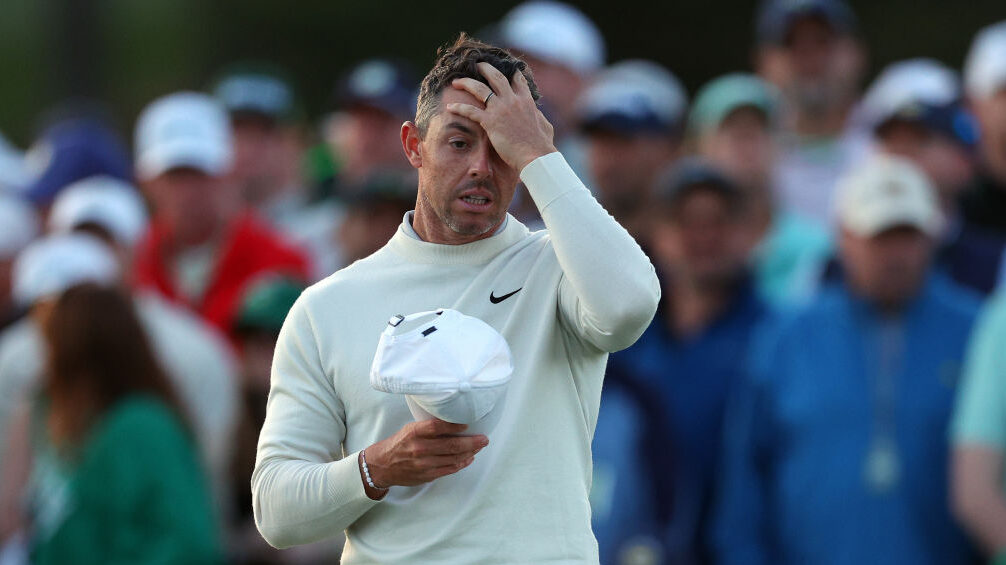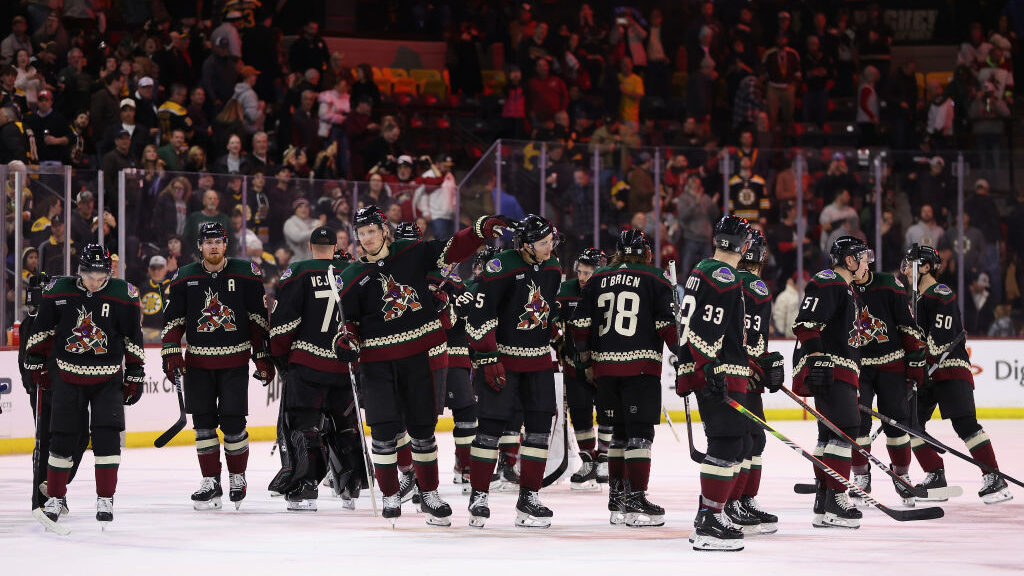Cardinals’ Vance Joseph takes Steve Keim’s place on hot seat
May 5, 2020, 7:24 PM | Updated: May 6, 2020, 5:26 pm
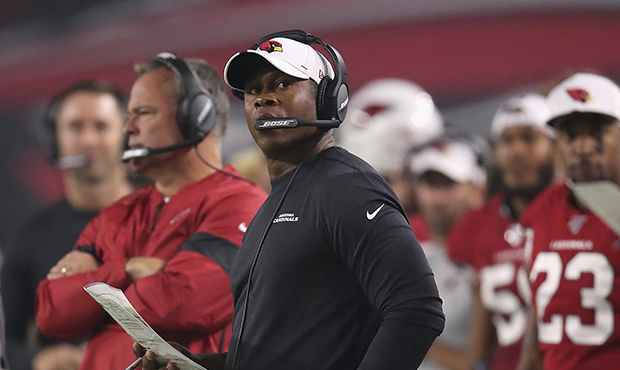
Defensive Coordinator Vance Joseph of the Arizona Cardinals watches from the sidelines during the NFL preseason game against the Los Angeles Chargersat State Farm Stadium on August 08, 2019 in Glendale, Arizona. The Cardinals defeated the Chargers 17-13. (Photo by Christian Petersen/Getty Images)
(Photo by Christian Petersen/Getty Images)
In the NFL, there is a big difference between football player and playmaker.
One helps you compete. The other helps you prevail. One fills a uniform. The other fills a stadium and the win column.
This fundamental difference represents the biggest improvement in the new-look Cardinals, a franchise that has doubled their tally of impact performers since the start of the 2019 season.
They now feature Kyler Murray, Larry Fitzgerald, DeAndre Hopkins, Kenyan Drake, Isaiah Simmons, Chandler Jones, Patrick Peterson and Budda Baker. The latter might be a stretch, but Baker shined at times last season and was rewarded with a Pro Bowl nod, where he proceeded to intercept a pass from Lamar Jackson. Works for me.
Either way, the star power of this franchise has increased dramatically. So has the marketability. So has the swagger, the high-octane stuff that fuels every top-tier team in the league.
The Cardinals didn’t have a great team when they reached the Super Bowl in 2009. But they had the requisite amount of impact players: Fitzgerald, Kurt Warner, Anquan Boldin, Darnell Dockett, Karlos Dansby, Adrian Wilson and Antrel Rolle. Throw in Steve Breaston, and those Cardinals were the last NFL team with three 1,000-yard receivers, and among only five teams to accomplish the feat in the history of the league.
With any luck, the 2020 Cardinals will take a similar flight path. They will soar on high-end talent, reversing the flow of energy at State Farm Stadium, which has become a safe haven for infidels and opposing fans in recent years.
There are red flags accompanying all this Big Red optimism. The biggest is Vance Joseph and his defense, a combination that underwhelmed in his debut season as defensive coordinator in Arizona. He was at the root of tremendous tactical and communication problems, head of a defense that couldn’t cover tight ends; blew too many assignments; missed too many tackles; practicing social distancing before a pandemic arrived.
In his daffiest moments, he asked Jones to peel off and cover receivers in space, even though he’s one of the best pass rushers in the NFC.
Joseph knows he’s under a lot of pressure. He’s inherited Steve Keim’s hot seat. He must make the new pieces fit, a difficult task for any coordinator during the strangest offseason in NFL history.
He says he has ambitious plans for Simmons, calling him a “problem solver.” He said there’s more to Leki Fotu than he showed at Utah, implying that a very successful college head coach (Kyle Wittingham) didn’t maximize Fotu’s talents.
Granted, they’re just words, the kind of sugar you expect after a fruitful NFL draft. But they’re also reckless. They make fans overdose on optimism. They represent derelict coaching if Joseph stretches these kids too far too soon, not allowing them to get comfortable and excel at a single position before tackling other responsibilities. You don’t want rookies bouncing meeting rooms to meeting rooms, swimming in a scheme they can’t digest in full, overloading their brains at a stressful, crucial time in their careers.
The organization was wise to give Joseph another chance, especially given the recent optics in Arizona, where an African-American head coach was fired after one season (Steve Wilks), a quick-trigger but warranted move that upset many in the industry; while their Caucasian general manager and friend of the owner was retained through an extreme DUI and four years of non-winning football.
After a great offseason, Keim has proven he was worth the investment and the long leash. Now it’s up to Joseph to do the same.
After all, the Cardinals just earned from rave reviews from media titan Peter King. They landed at the No. 12 in a national website’s post-draft power ranking, a quantum leap for a five-win team in 2019.
And if Joseph’s crew can learn to play a little bit of defense in the months ahead, the fun is just beginning.


